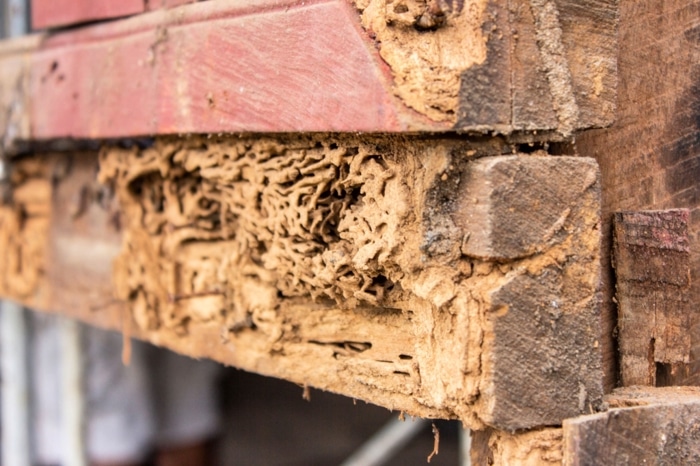Every experienced property manager knows that a termite inspection report is more than just a stack of paper. It’s a snapshot of your property’s health and a warning light for future problems. When you take the time to read between the lines, this report can save you a lot of stress, money, and even your reputation.
Let’s walk through how to really use that report to your advantage—not just glance at it and file it away.
Dig Into the Details—Don’t Just Scan for “Clear” or “Active”
The first mistake most people make is looking for just one word—“clear” or “active.” They want to know if there’s an immediate problem. Sure, that’s important. But what the report really tells you goes much deeper. It outlines the current state of your property, where the risks are building up, and what kind of maintenance or prevention work is needed before things get out of hand.
Let’s say the report doesn’t find any termites right now. Great. But it also mentions that several crawl spaces have excessive moisture or that wood is sitting too close to the soil. That’s your early warning system sounding off. If you wait until the next inspection to fix those things, you’re basically crossing your fingers and hoping termites don’t move in.
That’s not managing. That’s gambling.
Understand How Inspectors Talk
You don’t need to be a pest control expert, but you do need to understand the language inspectors use. When a report says something like “conducive conditions,” that’s not just filler. That means your property is inviting termites to make themselves at home.
Another common phrase is “evidence of prior infestation.” That doesn’t always mean there’s still an issue, but it does mean your building has a history—and pests don’t just forget places they’ve liked before. If it happened once, it could happen again unless you make changes.
Then there’s “inaccessible areas.” This one’s tricky. If the inspector couldn’t get into a spot—maybe a locked room or an area behind drywall—it’s listed, but that doesn’t mean it’s all clear. Those are blind spots, and you’ll want to make sure they’re checked next time around or make changes to allow future access.
Treat the Recommendations Like a Checklist—Not Suggestions
One of the best things you can do with a termite inspection report is treat the recommendation section like a punch list. If the report says “repair water-damaged fascia boards on the south wall,” don’t wait. Knock that out within the next maintenance cycle.
The longer you sit on recommendations, the more your risk builds. It also becomes harder to argue that an issue was “unexpected” if it shows up on a report from six months ago and you did nothing.
Property managers who act fast on these recommendations tend to avoid the big surprises—the kind that come with serious repair bills or upset residents. And when you use a pest control platform like Pest Share, keeping up with these to-dos is a whole lot easier because treatments and follow-ups are streamlined right into your service program.
Use the Report as Leverage
Here’s a trick seasoned managers know—these reports aren’t just about catching problems. They can actually help you during leasing, budgeting, and even owner communications.
When you’re trying to get capital for improvements, nothing speaks louder than data. If you’re asking for money to install moisture barriers or update aging siding, include a copy of your most recent termite report showing those areas as risk factors. It’s hard to argue with black-and-white evidence.
When speaking with residents, use the report to explain why certain repairs are happening or why you need to schedule treatments. This keeps things transparent and builds trust. Nobody likes surprise work orders. But if you can point to the inspection results and say, “This helps keep your home safe,” it changes the conversation.
Budget Smarter with the Right Timing
Termite reports are time-stamped roadmaps. If you’ve been in this game long enough, you’ve probably seen reports pile up year after year. But are you comparing them?
You should be. Look at what was flagged last year versus this year. Are the same issues popping up? Is one side of the building always at risk? Does termite activity spike during spring inspections? These are all clues that help you time your preventive work better—and spread out your maintenance budget instead of reacting to emergencies.
For instance, if your reports show that the south side of your building is always more vulnerable, you can schedule treatments earlier in the year or focus moisture control efforts there during off-peak months. It’s not just about fixing problems—it’s about knowing when and where to put your resources.
Get Ahead of Renewals and Real Estate Decisions
If you manage buildings that are up for refinancing or are part of a purchase or sale, the necessity of a termite inspection report plays a huge role. Lenders and buyers look at these reports when determining value and risk. If your reports show years of active infestations or ignored recommendations, that’s going to raise questions—and maybe lower offers.
On the flip side, if your reports show consistent maintenance, fixed issues, and no major infestations, that builds confidence. It shows that you’ve been on top of things and that the property has been taken care of.
Pest Share even makes this easier by offering digital logs and documentation. That means you’re not flipping through folders or trying to track down reports from three years ago. It’s all in one place and easy to access.
Prevent Legal Headaches Before They Start
Let’s be real—nobody likes dealing with legal issues. And while we’re not diving into legal rights and laws here, one thing is clear: documented neglect leads to problems. If there’s ever a dispute about property conditions, that termite report becomes evidence.
Keeping a record of inspections and clearly acting on recommendations goes a long way in proving that you’re doing your part as a property manager. That can help you avoid complaints and keep things running smoothly. It’s simple—stay proactive, and you stay protected.
Termite Reports Aren’t Just for the Experts
Some folks think they need to rely on the pest control company to tell them what’s important in a termite report. That’s not the case. Once you get familiar with the report structure and language, you can read it like a map—and make better decisions because of it.
It’s no different than reviewing a contractor’s estimate or an HVAC service report. The more comfortable you get with it, the more value you’ll get out of it.
And here’s the thing—this isn’t just about termites. It’s about how you manage properties overall. The more proactive you are, the smoother everything runs.
Make Termite Prevention Part of Your System
A single report won’t solve anything unless you act on it. That’s why having a system in place is key. When you’re using Pest Share, for example, you’re not just getting a service call. You’re getting a long-term plan—built into your lease agreements, tied to resident needs, and backed by professionals.
It helps you catch things before they grow into major repairs. And since residents can request services through Pest Share too, you’ll hear about issues faster.
So, don’t just wait for termites to show up in next year’s report. Start thinking of these inspections as a tool to fine-tune your management game.






